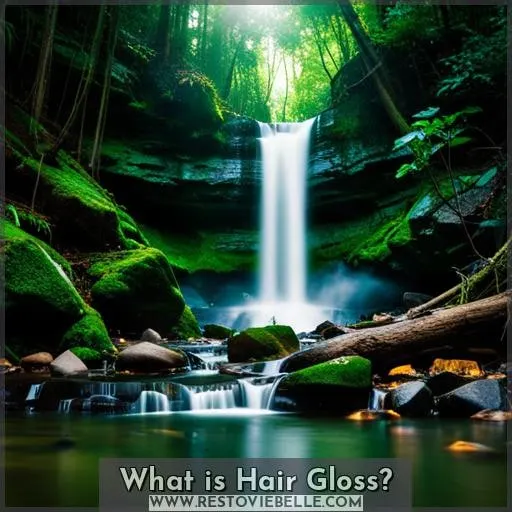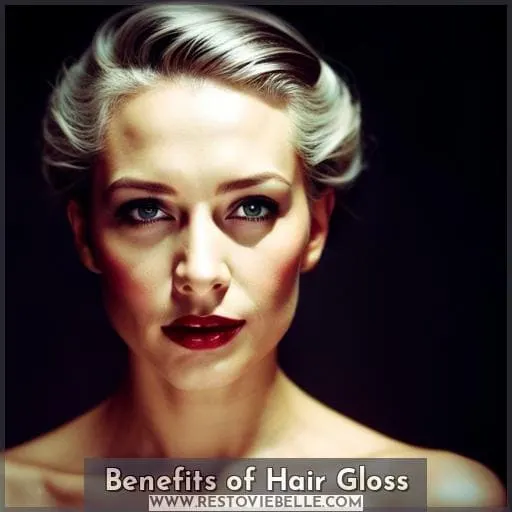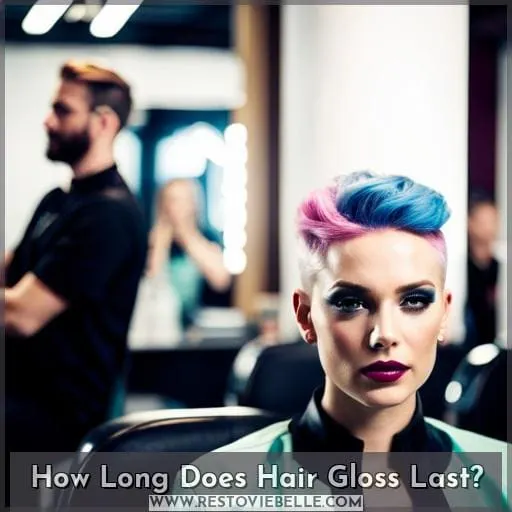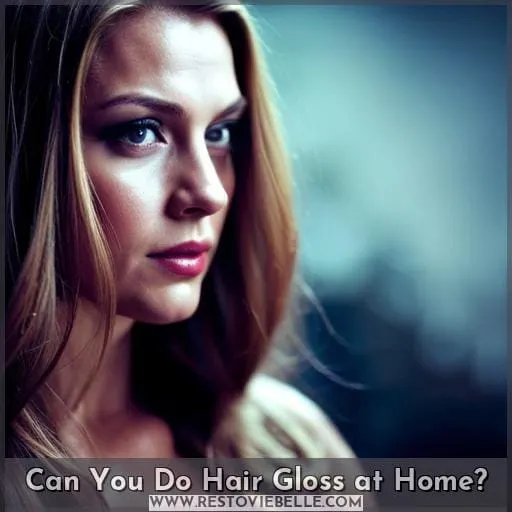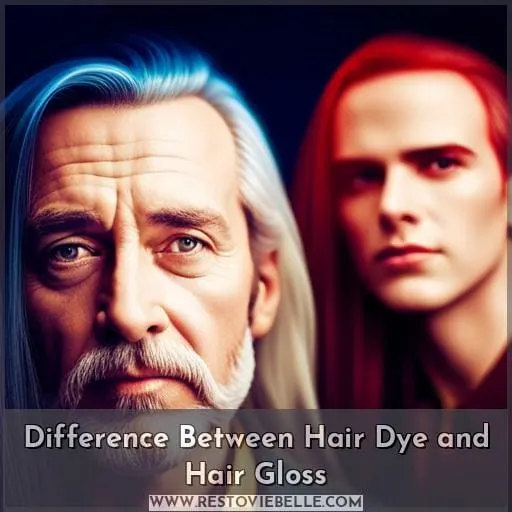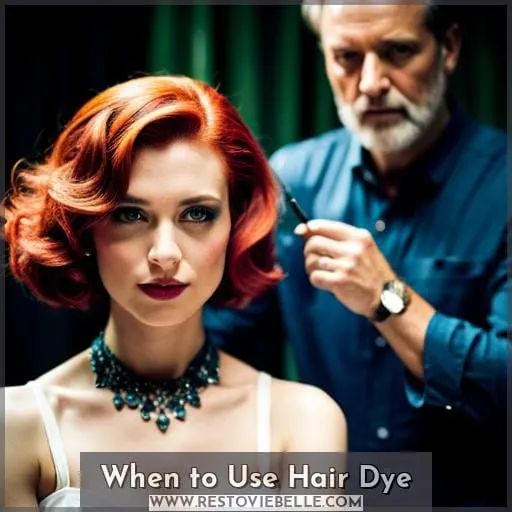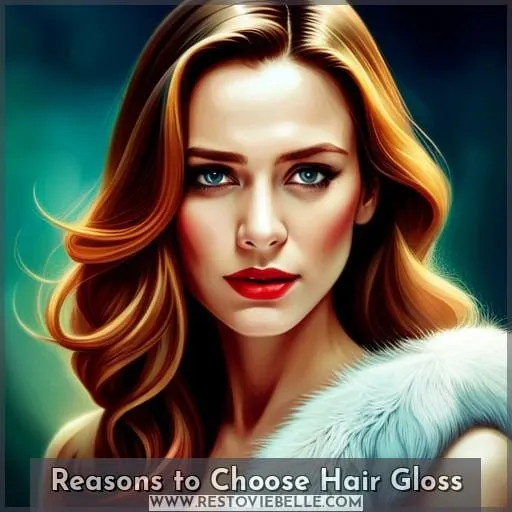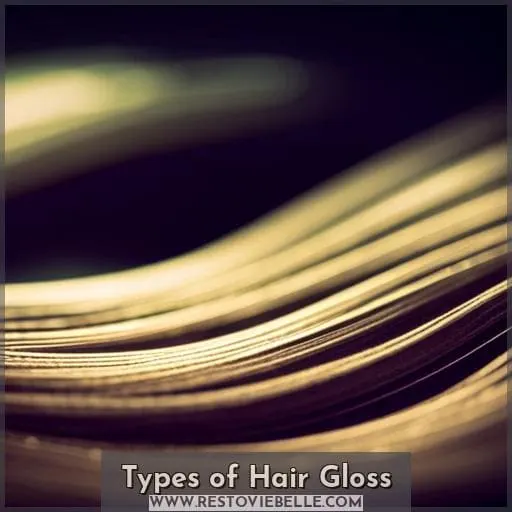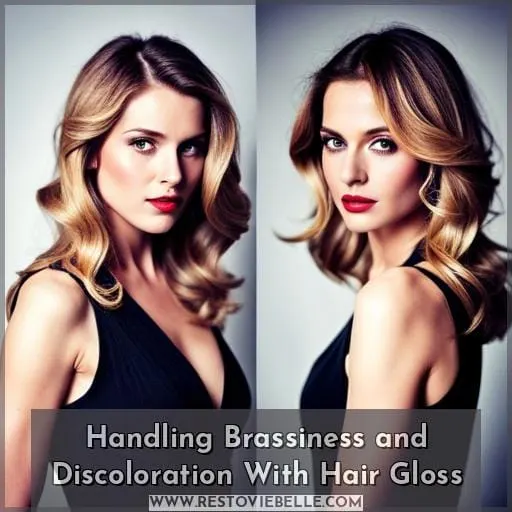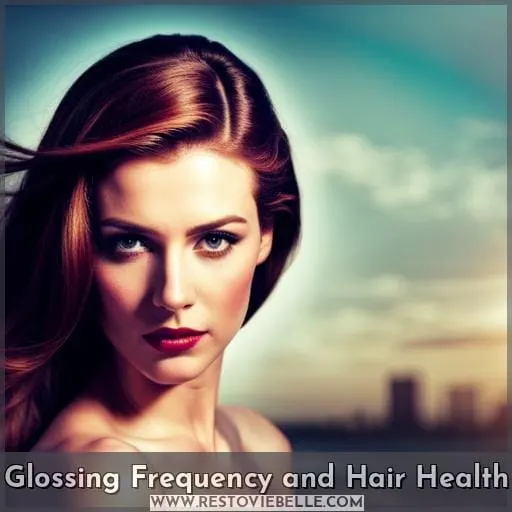This site is supported by our readers. We may earn a commission, at no cost to you, if you purchase through links.
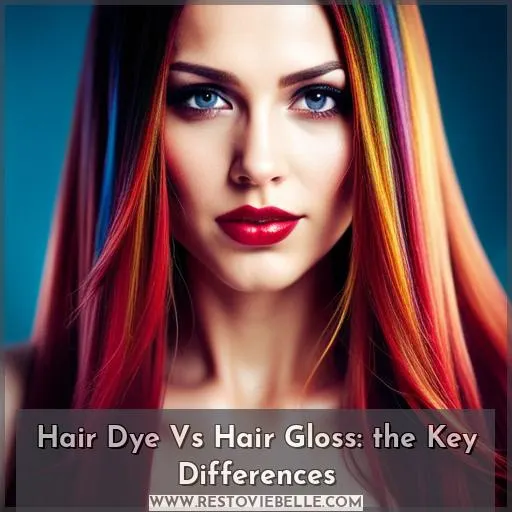 Do you want to experiment with hair color but don’t know where to begin? From the subtle sheen of a hair gloss to the dramatic change of dye, there are so many options out there that it can be hard to choose.
Do you want to experiment with hair color but don’t know where to begin? From the subtle sheen of a hair gloss to the dramatic change of dye, there are so many options out there that it can be hard to choose.
When deciding between hair dye and hair gloss, it’s important to understand how each one works and what they offer in terms of results.
The key differences between them will help you make an informed decision about which is best for your needs. Hair glaze provides shine while adding depth or tonal changes without any lightening effect.
On the other hand, permanent dyes provide longer-lasting coverage but come with more maintenance requirements than a simple glossing session would require.
Dive deeper into this comparison by understanding when and why each should be used as well as their pros and cons – all crucial information before committing!
Table Of Contents
- Key Takeaways
- What is Hair Gloss?
- Benefits of Hair Gloss
- How Long Does Hair Gloss Last?
- Can You Do Hair Gloss at Home?
- Difference Between Hair Dye and Hair Gloss
- When to Use Hair Dye
- Reasons to Choose Hair Gloss
- Types of Hair Gloss
- Handling Brassiness and Discoloration With Hair Gloss
- Glossing Frequency and Hair Health
- Conclusion
Key Takeaways
- Hair gloss offers shine and conditioning.
- Hair dye is permanent, while gloss is demi-permanent.
- Gloss is less damaging than permanent dyes.
- Hair gloss is suitable for all hair types except blondes.
What is Hair Gloss?
You can switch up your look without the commitment of a permanent dye job and get some added health benefits with hair gloss! Hair gloss is not just for color, but also offers great conditioning properties that can repair damage.
It’s an ideal solution for blending gray hair to give you a slight color change, as well as adding shine and smoothing out texture.
Glosses are less damaging than dyes due to their lower peroxide content, so they’re suitable for all hair types except blondes who may need bleaching before applying it. You can DIY at home or go professional in the salon – both options have advantages.
Clear shades don’t risk any unexpected darkening colors, while salons provide controlled results that last 12 weeks or longer depending on how often you wash your hair and what type of shampoo used.
Benefits of Hair Gloss
Glistening up your locks with a hair gloss treatment can offer an array of benefits, such as providing deep conditioning and restoring shine for a luminous look that sparkles. Glossing is especially beneficial because it’s less damaging than permanent coloring and requires less frequent touch-ups — typically every four to six weeks.
It won’t lighten dark hair but will help neutralize brass tones while adding depth and dimension without long-term commitment. DIYers can also use clear gloss at home, which helps boost luster or tone down yellow hues.
Unlike dye jobs, glossy care also doesn’t require root touch-ups when fading out since the color gradually fades over time instead of washing away all in one go.
Whether you’re looking to try out new shades temporarily or want to restore natural shine with added nourishment, there’s no better way than by opting for a safe yet effective solution like glazing up those tresses!
How Long Does Hair Gloss Last?
Put a shine on your locks that lasts for weeks with hair gloss treatments! Glossing can provide multiple benefits, including color correction and conditioning.
- Clear gloss is recommended for starters—it avoids any color mishaps due to unexpected darker shades.
- Professional salon results are easier and more precise than DIY.
- Sulfate-free shampoo helps prolong the life of your glossy hue.
- Colorists can adjust during the process if needed.
- Pay attention when selecting semi vs permanent dye—glosses last up to 12 weeks while dyes are longer lasting.
It’s clear that both types of treatments have their pros and cons, but understanding how long hair gloss lasts makes all the difference between happy or disappointed results! A professional consultation will ensure you get exactly what you need without compromising on health or shine—prolonged gorgeousness from head to toe!
Can You Do Hair Gloss at Home?
With a few simple steps, you can add shine and luster to your hair at home with the use of a hair gloss. DIY glossing is ideal for those looking to save money or get results quickly without stepping into a salon.
Home gloss kits come in different shades so that you can choose one that works best for your desired outcome. It’s important to read through instructions before attempting any type of glossy treatment as there are key tips on how long it should be left on the hair and if additional products need to be added afterwards.
At-home results may not be as precise compared to salon treatments; however, more experienced users tend to achieve satisfactory outcomes after practicing proper application techniques several times.
Glossing products such as Redken Shades EQ Bonder Inside strengthen strands while conditioning, tinting, and adding shine over time – all from the comfort of your own home! If you’re unsure about making permanent color commitments or dealing with damaged locks, opt for an at-home option rather than risk further damage by going straight for dye jobs offered by salon professionals.
With these tips in mind, you’ll have beautiful glossy tresses in no time!
Difference Between Hair Dye and Hair Gloss
You can get a shiny hair makeover without the hassle of dyeing when you opt for a hair gloss instead. Hair gloss is not the same as permanent color; it’s demi-permanent and more gentle on your strands due to its ammonia-free formula.
It coats the cuticle rather than penetrating into the cortex, while offering conditioning properties and adding shine.
Glosses come in clear shades or various colors, allowing you to neutralize brassiness or add lowlights with no long-term commitment. Maintenance includes using sulfate-free shampoo, protective styling techniques, and heat protection products like leave-ins.
Moreover, hair gloss offers more flexibility with less risk compared to traditional dyes. There are several benefits to using hair gloss, such as its ammonia-free formula, glossing techniques, gloss maintenance, hair gloss products, and gloss color options.
However, one downside is that gloss won’t provide complete gray coverage like permanent dye does. Nevertheless, it can still be used for certain percentages of graying strands if needed.
When to Use Hair Dye
When it comes to hair color, choosing between dye and gloss can be tricky. Hair dye is permanent, while glosses are demi-permanent. So if you’re looking for a major color adjustment or gray coverage, then hair dye is the better choice.
However, if you’re simply looking for an adjustment in tone or shine without altering your overall look too drastically, then opt for a semi-permanent gloss instead.
In addition to adjusting tones and adding shine, dyes can also lighten dark hair. On the other hand, glazes won’t have this effect unless bleaching first occurs prior to the application of the product.
If you want root touch-ups with less commitment than permanent coloring provides, try using clear shades of both products. These will add conditioners and give added protection against damage from heat styling tools as well as sun exposure.
Reasons to Choose Hair Gloss
Take your hair transformation to the next level with a glossy glow that won’t damage or fade away like a traditional dye job. With hair gloss, you can experiment with various shades without making long-term commitments and enjoy less damaging results.
- Glossing Benefits: Hair gloss adds shine while conditioning the cuticle layer for healthier locks. It also neutralizes yellow or brass tones and offers subtle color changes without lightening dark tresses.
- Glossing Frequency: You can get your gloss treatment done at least every 4-6 weeks.
Whether looking to blend grays in between full dye jobs or just wanting an added boost in shine, hair gloss is definitely worth considering! As an alternative to chemical-laden dyes, it helps restore luster and vibrancy while protecting against future damage caused by heat styling tools and other environmental aggressors that could otherwise strip away moisture from strands over time.
Types of Hair Gloss
Discover the different types of gloss, from clear to color depositing, that can give your hair a luminous look and healthy feel.
Semi-permanent glosses are popular for their ability to add subtle tones without damaging your hair. They come in both colored and clear versions. Colored ones add soft tints or highlights while Clear Gloss adds shine with no color change.
Brunettes may want to try dark brown or burgundy hues. Blondes should stick with golden shades like gold beige or honey blonde for best results.
DIY tips include applying conditioner before adding the gloss as this helps protect strands from any possible damage during the application process.
Color correction is also easily achievable using a semi-permanent tinted gloss – leaving you looking fresh at home without having to visit a salon!
And don’t forget about upkeep: use sulfate-free shampoo followed by leave-ins when needed.
Handling Brassiness and Discoloration With Hair Gloss
You can use hair gloss to combat brassiness and discoloration for a refreshed, more vibrant look. Gloss treatments neutralize yellow or brassy tones in blondes while providing color correction and adding shine.
DIY gloss tips include starting with clear shades if you’re not sure what result you want to achieve. This will allow you to add subtle tint without the risk of unexpected darkening.
To maintain results between appointments, it is recommended to use sulfate-free shampoo, fewer heat styling tools, and leave-in conditioners that are specifically designed for color-treated haircare routines.
Glossing Frequency and Hair Health
Frequenting the salon for a gloss can keep your locks looking luscious and healthy. Hair gloss benefits go beyond just adding shine – it also strengthens hair, neutralizes brassiness, prevents discoloration, and adds condition to dull tresses.
Here are five tips for optimizing its effects:
- Choose the right shade of gloss based on your desired color effect.
- Regularly consult a professional stylist to ensure proper application techniques.
- Utilize specific products like Redken Shades EQ Bonder Inside that will help lock in color while hydrating hair.
- Apply every four to six weeks depending on maintenance needs.
- Rely on clear shades if you’re looking for an added layer of protection without any change in hue.
With these steps followed closely, you’ll get glossy results with minimal effort! Glossing is safe enough even when done at home so long as instructions are followed carefully—and with consistent use comes healthy-looking strands worthy of admiration from all angles.
Conclusion
You’ve come to the right place to get the scoop on hair dye vs hair gloss. Hair gloss is a semi-permanent treatment that adds shine and improves hair health, while hair dye is a permanent color that penetrates into the cortex of the hair.
Hair gloss can be used for all hair types and colors, while hair dye is ideal for gray coverage and major color changes. Clear gloss adds shine and benefits hair health without coloring, while colored glosses can be used to blend colors or correct tones.
Hair gloss treatments are not damaging and can help with brassiness or discoloration. Glossing frequency depends on hair color and client needs, but it is generally recommended that you gloss every four to six weeks.
Ultimately, hair dye and hair gloss both have their place in hair care, so choose the one that suits your needs best.
